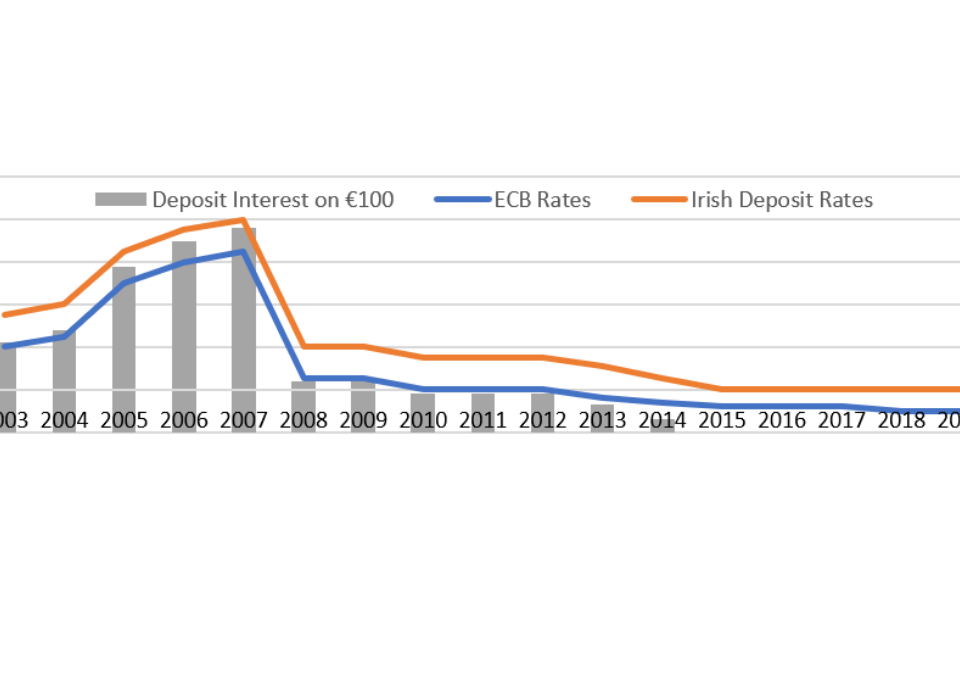It was described by Albert Einstein as one of the greatest miracles known to man. He was referring to the incredible potential of an investment to grow over time when interest is continually earned upon interest over a long period of time. The ‘miracle’ becomes more real when you consider that €100 invested at an average return of 8% pa will grow to €4,700 over 50 years , €47,000 over 80 years and €220,000 over 100 years. This explains how intergenerational wealth can be created.
An equally powerful principle in investing is that of ‘euro cost averaging’. Euro cost averaging is an investment strategy which involves saving regularly into a particular investment at regular intervals over a period of time. This period could be over several months or years. This method or strategy can help to reduce risk during times of market volatility, and can avoid the pitfalls of attempting to ‘time’ entry into investment markets.
How do most investors react in times of market uncertainty?
Many investors are inclined to wait until things settle down during periods of volatile share markets. Some investors try to predict when the bottom of the market has been reached in an attempt to invest at the optimal time. Other investors wait until confidence has returned to the market before investing. Interestingly and ironically, even when markets do recover, and confidence does return, these very investors wait for the market to fall again before committing to an investment, in the hope of picking up some bargains.
Such approaches to investing are flawed, as they lead to what could be termed ‘investor paralysis’, resulting in a delay in investing and being unable to fully participate in the benefits of a market that will eventually recover.
The principle of euro cost averaging provides a means of reducing the risk of investing during a period of market volatility. It helps to overcome the ‘investor paralysis’ often associated with a falling share market.
EXAMPLE
Let’s use an example of a €100,000 investment in a managed fund. The investment in a managed fund involves the purchase of ‘units’ representing the value of the underlying assets of the fund, which would often consist of bonds, international shares, commodities, currency and property.
If this were to be invested all at once then the following may occur over the next five
periods.
Investing a lump sum of €100,000
PERIOD |
UNIT PRICE |
UNITS PURCHASED |
VALUE OF INVESTMENT AT END OF PERIOD |
|---|---|---|---|
| 1 | 1.00 | 100,000 | 100,000 |
| 2 | 0.80 | 0 | 80,000 |
| 3 | 0.70 | 0 | 70,000 |
| 4 | 0.90 | 0 | 90,000 |
| 5 | 1.15 | 0 | 115,000 |
In this case the investor’s patience has been rewarded by an increase in the value of the initial investment. Let’s compare this with an investor who is reluctant to invest at a time of market volatility. However, in conjunction with their financial planner, they commit to gradually investing the €100,000 available. This involves investing an amount of €20,000 over the same five periods until the entire the €100,000 has been invested.
Investing a regular amount of €20,000 over 5 periods
PERIOD |
AMOUNT INVESTED |
UNIT PRICE |
UNITS PURCHASED |
VALUE OF INVESTMENT AT END OF PERIOD |
|---|---|---|---|---|
| 1 | 20,000 | 1 | 20,000 | 20,000 |
| 2 | 20,000 | 0.8 | 25,000 | 36,000 |
| 3 | 20,000 | 0.7 | 28,571 | 51,500 |
| 4 | 20,000 | 0.9 | 22,222 | 86,218 |
| 5 | 20,000 | 1.15 | 17,391 | 130,162 |
In this example, the investor has a greater investment value at the end of the five periods. By committing to a regular investment amount, despite the fluctuating price movements, the investor was able to overcome the ‘paralysis’ of investing and was able to purchase some units in the managed investment at a reduced price. In fact, the average unit price that the investor was able acquire units for is 0.91
HOW DOES IT WORK?
When you commit to investing a fixed amount into an investment, which varies in price, such as shares or units in a managed fund, you purchase more when the price is low and purchase less when the price is higher. It is the same principle when you spend the same amount topping up the petrol in the car each week – you buy more litres of petrol for the same euro amount when the price of petrol is lower.
ARE THERE ANY DISADVANTAGES?
Does this mean that you should never invest a lump sum of money as part of a long-term financial strategy? The principle of euro cost averaging does not mean that investing a lump sum is inappropriate, as investing a lump sum can be advantageous when markets happen to rise in value over a prolonged period after the initial investment takes place. Euro cost averaging should not be viewed as a way of maximising returns. Rather it should be viewed as a risk minimising principle suitable for investors who would otherwise be reluctant to establish a long-term investment portfolio due to market uncertainty.
HOW SHOULD I GO ABOUT IT?
It is very important that you discuss the suitability of euro cost averaging with us and we will advise you if this is an appropriate way of implementing an investment plan.




